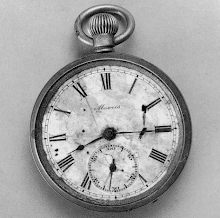Thank you very much for providing a relatively complete answer to my September 2021 request for more information concerning last April’s investigation of the World War I-era 75mm artillery shell that was exposed following heavy rains in July 2020 ... FUDS cleanup program director Dan Noble informed the RAB on January 12, 2021, that USACE had "inspected and obtained x-rays of the shell" and that "the shell was found to be a 75mm with a hex plug” [Minutes, pg. 7]. According to DOEE specialist Richard Albright, during WW I the experiment stations at Lakehurst, NJ, Edgewood Arsenal, MD, and AUES adapted the Army’s standard high explosive 75mm field artillery round by adding a hexagonal plug to accommodate poison gas. Hence, there can be no doubt that the shell discovered at Ft. Totten in July 2020 came from the Glenbrook Road munitions burial pits in Spring Valley in northwest Washington, DC ...
I cannot read the two voluminous reports you provided for several weeks but, after a cursory review of their contents, I’m absolutely astounded that — taken together — these documents definitively solve an enduring mystery that has bedeviled Spring Valley FUDS cleanup stakeholders for nearly thirty years. Namely, what ultimately happened to the soil contaminated with chemical warfare materials (CWM) and laboratory waste from the 4825 and 4835 Glenbrook Road construction sites that was dumped and subsequently removed from Ft. Totten National Park in 1992. In short, these two reports finally reveal that the ultimate destination of the toxic Spring Valley fill material was a narrow wooded strip of land located east of the Metro station between Gallatin and Galloway Streets, NE — approximately 2100 feet (or seven football fields) away from the original staging area [2021 PA/SI Report, Introduction, pg. 2].
Not only does the 2019 SI Report delineate the precise staging area at Ft. Totten where soil with contaminants of potential concern (COPCs) were originally spread by the bulldozer [see Figure 2 map, pg. 22], it states that “approximately 60 yards of uncompacted fill material” was placed there "as part of landscape restoration” [Section 2.2, pg. 5] ... If the NPS already knew — from its 2019 SI Report — that multiple tons (“60 yards”) of Glenbrook Road soil with COPCs was originally spread out west of the Ft. Totten Metro station in 1992, why — after discovery of an AUES UXO roughly 2,100 feet east of that location — was the April 2021 investigation confined to that very narrow footpath instead of a much larger area on either side?
The question of how much toxic Glenbrook Road fill material still remains at Ft. Totten cannot be answered until the NPS conducts a more thorough and transparent investigation. At the March 9, 2021, RAB meeting I asked director Noble [Minutes, pg. 13] whether he thought the tons of contaminated soil that were moved from Spring Valley could have been “contained in the one-quarter acre where the foot trail is [now located]?” If the NPS “only surveys the foot trail,” I suggested, "they’re going to miss [contaminated] soil to the east and west.” Please excuse me for saying so but, in your agency’s zeal to obtain a clean bill of health at Ft. Totten, this now appears to be exactly what happened.
Allen Hengst
Email to NPS Chief Bartolomeo
January 24, 2022 (pg. 2)
Allen Hengst
Email to NPS Chief Bartolomeo
January 24, 2022 (pg. 2)



